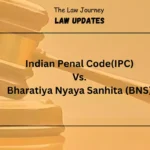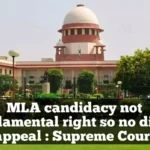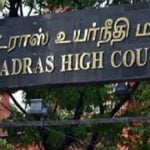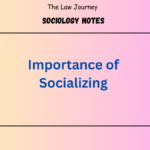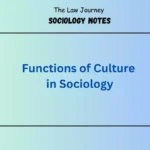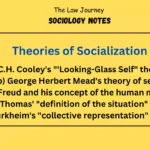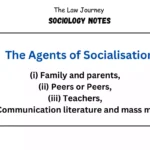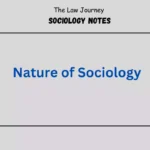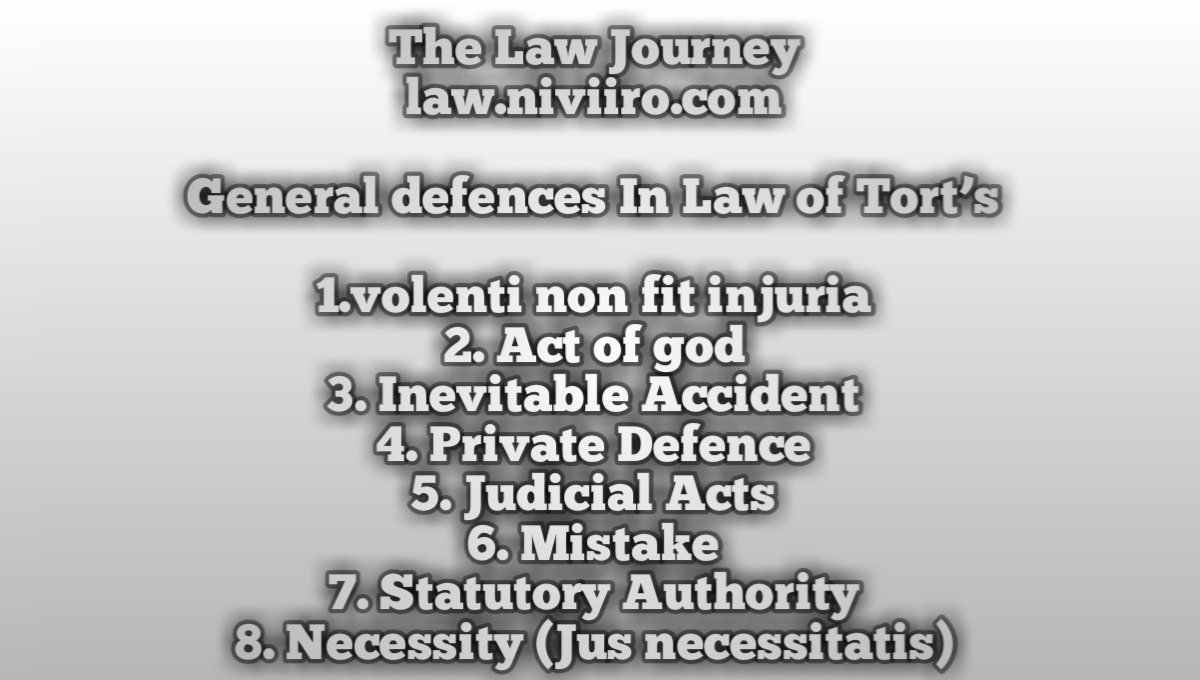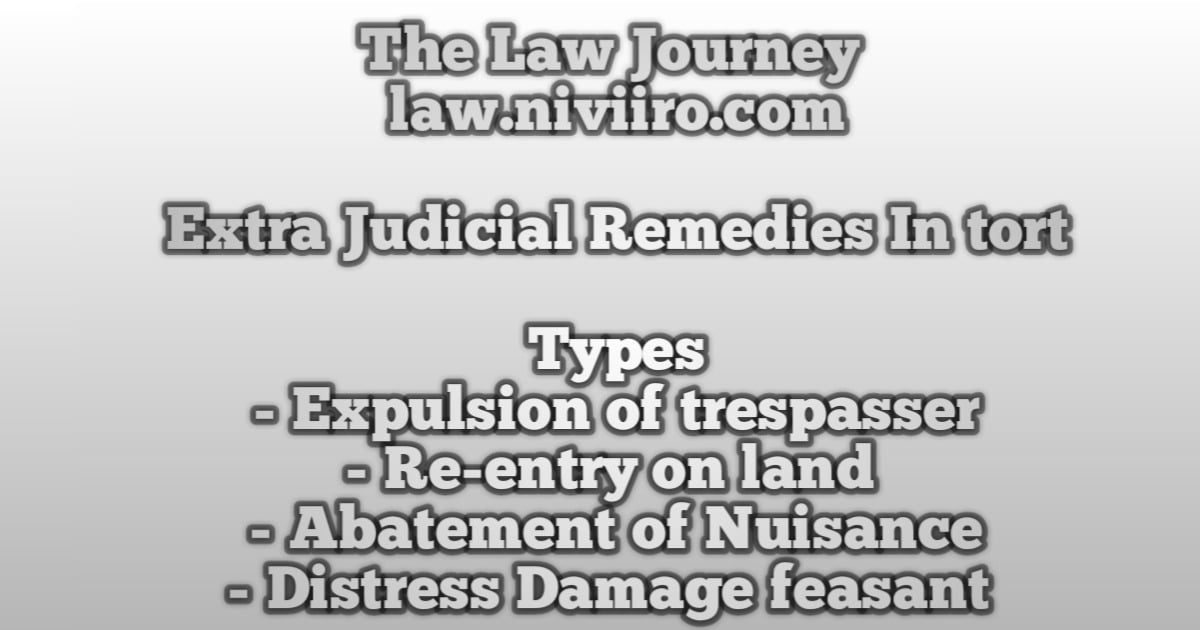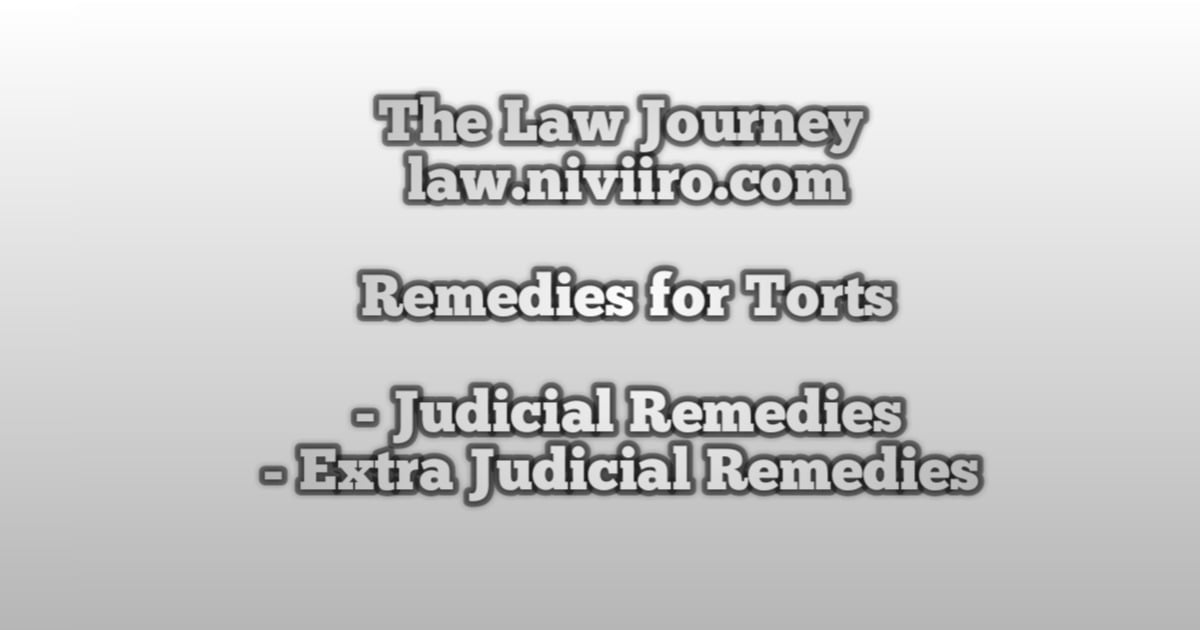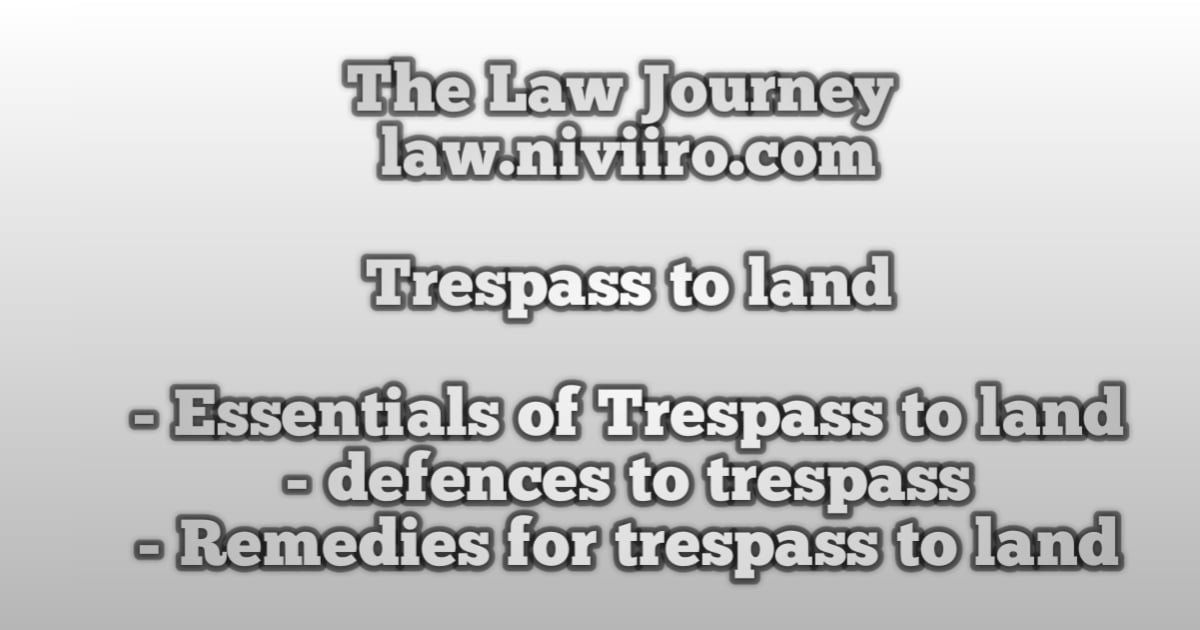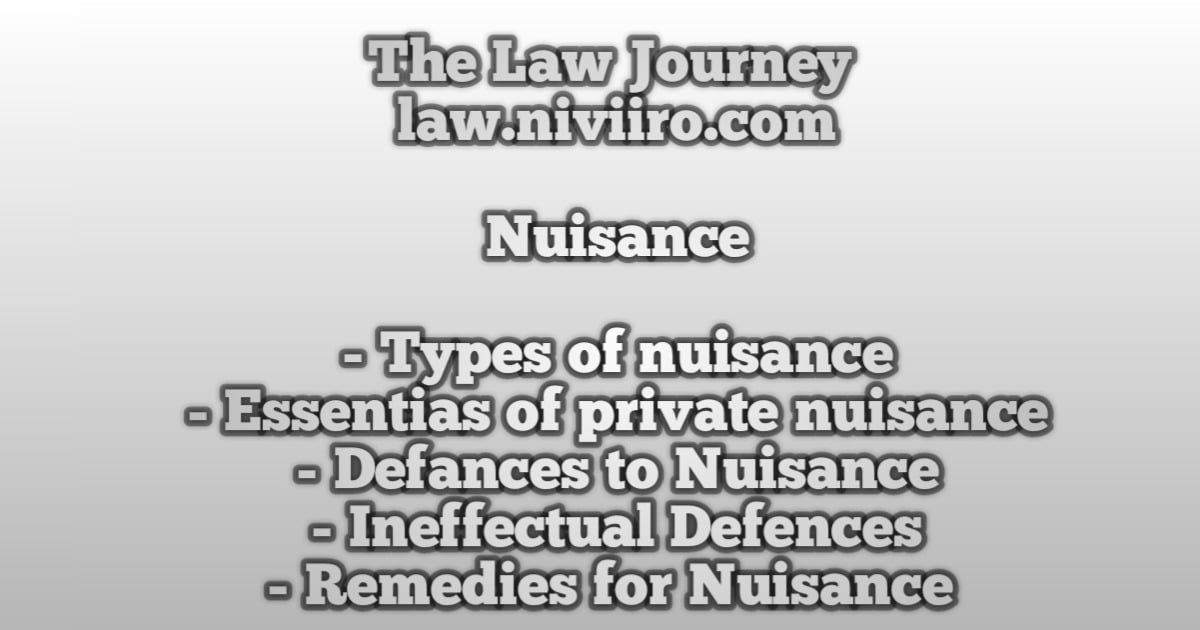These are the general defences in law of tort’s
1.Volenti non fit injuria
If a person suffers a harm voluntarily then it does not constitute a legal injury and is not actionable. The maxim volenti non fit injuria signifies this meaning. A man cannot make an excuse for an injury which he has received in fulfilment of his desire or willingly accepted to take the risk. If the person has consented either expressly or impliedly then he can’t sue for a tort. Volenti non fit injuria can also be translated as ‘the injury voluntarily suffered is not fit for action’.
So, no breach of legal right can be said to be committed against the person who is a willing party or who has given his consent for the harm/injury to be received in consequence of the furtherance of his act. Such injury is not actionable.
Bird v. Halbrook, (1828) 4 Bing 628, In this case, the defendant had placed a spring gun in the garden since flowers from his garden used to be stolen more often. One day, a pea-hen belonging to the plaintiff entered into defendant’s garden.
The plaintiff to catch his fowl got alighted the wall of the garden unaware of the spring gun placed there. The plaintiff got injured and the defendant was sued. The court gave the verdict in favour of plaintiff since he had no knowledge about the gun and the maxim volenti non fit injuria was not applicable here.
In Hall v Brooklands Auto Racing Club (1931) 1 K.B. 205, the plaintiff was a spectator at a motorcar race. During the race, there was a collision between two cars, one of which was thrown among the spectator, thereby injuring the plaintiff.
No such accident had occurred in the previous twenty-six years. Held that the plaintiff impliedly took the risk of such injury, the danger being inherent in the sport which any spectator could foresee, the defendant was not liable. The defendants were not insurers against accidents which could not reasonably be expected to happen.
There are basic points which constitute the maxim volenti non fit injuria which the defendant requires to prove for justifying his tort. They are:
(i) Knowledge of risk
At first instance, the plaintiff should have the knowledge about the nature of act/work and the risk involved in performing the act. If, he lacks the knowledge about the nature of work and quantum of risk what it will be when the work is performed; it will be presumed that he had no knowledge of the risk. The knowledge of the plaintiff is significant here and if it is missing, the defence of volenti non fit injuria cannot be availed by the defendant.
[Bowater v Rowley Regis Corpn. (1944) K.B. 476]. In this case, the plaintiff, a cart driver, was asked by the defendant’s foreman to drive a horse, which to the knowledge of both, was liable to bolt. The plaintiff protested, but ultimately took out the horse in obedience to the order. The horse bolted and the plaintiff was injured thereby. Held, the maxim volenti non fit injuria did not apply and the plaintiff was entitled to recover.
(ii) Free consent
Besides the knowledge of the nature of act as well as extent or risk in an act, free consent to run the risk is also necessary for the plaintiff. The consent must be voluntarily and with free will. Consent given by the plaintiff under coercion or force, fraud and mistake can’t be treated as free consent.
in R. v Williams (1923) 1 K.B. 340, the accused, a music teacher, was held guilty of rape when he had sexual intercourse with a minor girl on the pretext of an operation to improve her voice. In this case, the victim was not aware of the very act and she had consented to what she believed to be a surgical operation.
(iii) Consent to illegal act
It was observed in the case R. v. Donovan, (1934) 2 KB 49, that no person can give license to another person to commit a crime. Winfield1 has said, “certainly it cannot be true that the maxim is excluded whenever the act constitutes a crime as well as a tort, for every assault is criminal, and so are some libels, and yet it is possible, by assent, to negative tortious liability for many kinds of assault and libel.”
(iv) Consent of minors or insane persons
Consent given by minors or insane persons are generally not taken as consent since both are considered immature as far as knowledge is concerned and in such cases, consent by their guardians are taken as sufficient.
Limitations/ Exceptions to the application of the maxim volenti non fit injuria
Besides ‘no free consent’ (e.g. due to fraud, coercion, etc.) and ‘mere knowledge of the risk without the assumption of it’ (discussed above), the following are the various limitations to the application of the maxim volenti non fit injuria:
- Presumption is that the defendant will not be negligent. Thus, where a player negligently or deliberately hit another with a stick or where an operation is unsuccessful because of surgeon’s negligence, the defendant cannot plead volenti non fit injuria because the plaintiff never consented to an injury in that manner.
- Rescue cases– When the plaintiff voluntarily takes a risk (even of death) to rescue somebody from an imminent danger created by the wrongful act of the defendant, he cannot be met with the defence of volenti non fit injuria. The danger invites rescue. The cry of distress is the summons to relief. A man cannot be deemed to have given real consent if he acts under the compulsion of legal or even a moral duty.
- Illegal consent– No consent can legalize an unlawful act e.g. fighting with naked fists or duel with sharp swords. No person can licence another to commit a crime (R. v Donovan). “The process, game or operation to which assent is given must not be one which quite apart from tortious liability is banned by law” (Winfield). “No man can lawfully consent to his own death.” The maxim is inapplicable where the act is contrary to public policy.
- Breach of a statutory duty– The maxim has no validity against an action based on a breach of a statutory duty. Thus it is no answer to a claim made by a workman against his employer for injury caused through a breach by the employer of a duty imposed on him by statute (Wheeler v Mertor Board Mills Ltd.). Similarly, when a prisoner with known suicidal tendencies committed suicide within the police custody as the police failed to take reasonable precautions for preventing suicide, the police could not avail of the defence of the maxim.
- Negligence– The maxim does not apply to cases of negligence. When the plaintiff consents to take some risk.
2. Act of god | General defences In Law of Tort’s
As it is clear from the heading that what is not in hand of human being, we usually call that it is done by God. Flood, rainfall, frost, drought, wind, hurricane, earthquake etc., are the acts of nature. All these acts, most of the time cannot be anticipated and what would be its magnitude and its consequences. Cases related to Act of God
In Nichols v. Marsland, the defence was successfully pleaded. There the defendant created some artificial lakes on his land by damming some natural streams. Once there was an extraordinary heavy rainfall, stated to be the heaviest in human memory, as a result of which, the embankments of the lakes gave way. The rush of water washed away four bridges belonging to the plaintiff. It was held that the defendants were not liable as the loss had occurred due to Act of God.
3. Inevitable Accident
Accident means an unexpected injury and if the same could not have been foreseen and avoided, in spite of reasonable care on the part of the defendant, it is inevitable accident. According to Pollock, “It does not mean absolutely inevitable, but it means not avoidable by any such precautions as a reasonable man, doing such an act then and there, could be expected to take.”
It is, therefore, a good defence if the defendant can show that he neither intended to injure the plaintiff nor could he avoid the injury by taking reasonable care.
In Stanley v. Powell, the plaintiff and the defendant, who were members of a shooting party, went for pheasant shooting. The defendant fired at a pheasant, but the shot from his gun glanced off an oak tree and injured the plaintiff. It was held that injury was accidental and the defendant was not liable.
4. Private Defence
The law permits use of reasonable force to protect one’s person or property. If the defendant uses the force which is necessary for self-defence, he will not be liable for the harm caused thereby. The use of force is justified only for the purpose of defence.
There should be imminent threat to the personal safety or property, e.g., A would not be justified in using force against B, merely because he thinks that B would attack him some day, nor can the force be justified by way of retaliation after the attack is already over.
Bird v. Halbrook, (1828) 4 Bing 628. Here, the defendant had kept a spring gun in his garden, since flowers were oftenly stolen from his garden. The plaintiff, a boy whose fowl had strayed away, jumped into defendant’s garden to search his missing fowl. He had no knowledge about the gun there and he got injured. The court observed here that the defendant was liable since he had exceeded the right of private defence to his property.
Ramanuja Mudali v. M. Gangan, MANU/TN/0192/1984 : AIR 1984 Mad 103. In this case, the plaintiff was moving towards his own house at night and when he was passing through defendant’s land he got electrocuted by a live wire, put up by the defendant to stop the trespasser. Here, the defendant was held liable since he had exceeded the right of private defence to his property.
5. Judicial Acts
In Anderson v. Gorrie, (1859) 1 QB 668 (671), it was observed that if a judge or a judicial officer acts within his jurisdiction then no action lies for acts done or words spoken by a judge in the exercise of his judicial office, although his motive is malicious and the acts or words are not done or spoken in the honest exercise of his office.
The rule of judicial immunity from liability is based on the principle for the benefit of the people with a view that judges/judicial officers discharge their duties without fear of consequences. There is also remedy if the judicial error has been committed in the form of appeal to higher Court and the judicial corruption can be removed through criminal prosecution.
6. Mistake
Whether of fact or law, is generally no defence to an action of tort. Entering the land of another thinking that to be one’s own is trespass, driving of plaintiff’s sheep amongst one’s own herd is trespass to goods, injuring the reputation of another without an intention to defame is defamation.
Mistake means realization of wrong by oneself. When one commits an error in understanding or when one understands or perceives wrongly. Thus, a mistake may be committed by a person and it may be of two kinds:
(i) Mistake of law and (ii) Mistake of fact.
(i) Mistake of law-It has got generally no defence of civil liability for the rule, ignorantia juris non excusat which applies equally to the law of torts as to other branches of law.
(ii) Mistake of fact-It has got no ground of exemption from liability in tort. The defendant may be held liable in tort, although his mistake is based on reasonable and honest belief. e.g.-in the case Ransom v. Kitner, (1888) 31 All App 241, the defendant killed the plaintiff’s dog while he was hunting for wolves. The dog of plaintiff had striking resemblance to a wolf. The defendant was held liable for his act.
7. Statutory Authority
The Parliament enacts the law at the same time, it has also the power to reverse any principle of common law. Any act or omission tortious under the common law may be specifically made legal by a statute and in that respect, statutory authority is a defence.
Bhogilal v. Municipality of Ahmedabad, 3 Bom LR 415. In this case, Municipality of Ahmedabad demolished a wall of plaintiff under their statutory powers. The roof of plaintiff also collapsed in the process. On the points raised by the plaintiff, the court held that no suit will lie against the defendant, as they have carried out their duty under statutory powers although the plaintiff has suffered injury. The power (statutory) has been exercised with judgment and caution.
8. Necessity (Jus necessitatis)
An act causing damage, if done under necessity to prevent a greater evil is not actionable even though harm was caused intentionally. Throwing goods overboard a ship to lighten it for saving the ship or persons on board the ship, or for a competent surgeon to perform an operation on an unconscious person to save his life, or where private houses are pulled down to stop a fire, are the examples of necessity.
The defence of necessity applies to the cases of public necessity (a person’s own individual welfare can be placed in jeopardy for the public goods), private necessity and the assistance given to the third person without his consent as a matter of necessity. The welfare of the people is the supreme law – salus populi suprema lex.
In Kirk v Gregory (1876) 1 Ex. D. 55, on the death of X in a state of delirium tremens, his sister-in-law removed X’s jewellery, from the room where he lay dead, to another room, where she thought they would be safer. However, the jewellery was stolen by some unknown persons. Held, that she was liable, as there was no proof that her interference was reasonably necessary.
Related Post
Explain the term Volenti non fit injuria with Essentials & Exceptions ?
If a person suffers a harm voluntarily then it does not constitute a legal injury and is not actionable. The maxim volenti non fit injuria signifies this meaning. A man cannot make an excuse for an injury which he has received in fulfilment of his desire or willingly accepted to take the risk. If the person has consented either expressly or impliedly then he can’t sue for a tort.
Essentials for the term Volenti non fit injuria
(i) Knowledge of risk
(ii) Free consent
(iii) Consent to illegal act
(iv) Consent of minors or insane persons…
What is the role of ‘Act of god’ in tort ? explain with relevant case ?
As it is clear from the heading that what is not in hand of human being, we usually call that it is done by God. Flood, rainfall, frost, drought, wind, hurricane, earthquake etc., are the acts of nature. All these acts, most of the time cannot be anticipated and what would be its magnitude and its consequences. Cases related to Act of God. (Nichols v. Marsland….)
What do you mean by ‘Mistake of law‘ & ‘Mistake of fact‘ ?
(i) Mistake of law-It has got generally no defence of civil liability for the rule, ignorantia juris non excusat which applies equally to the law of torts as to other branches of law.
(ii) Mistake of fact-It has got no ground of exemption from liability in tort. The defendant may be held liable in tort, although his mistake is based on reasonable and honest belief.
What is the meaning of term ‘salus populi suprema lex‘ ?
Term term ‘salus populi suprema lex‘ means The welfare of the people is the supreme law.
define ‘Inevitable Accident’ ?
Accident means an unexpected injury and if the same could not have been foreseen and avoided, in spite of reasonable care on the part of the defendant, it is inevitable accident. According to Pollock, “It does not mean absolutely inevitable, but it means not avoidable by any such precautions as a reasonable man, doing such an act then and there, could be expected to take.”
References
- Universals Law of Torts
- Law of Torts by RK Bangia (22nd Edition)
- A K. Jain law of torts
- Law of Torts by Ratanlal and Dhirajlal
- Law of Torts by J.N. Pandey
- P.S.A. Pillai’s – Law Of Tort

